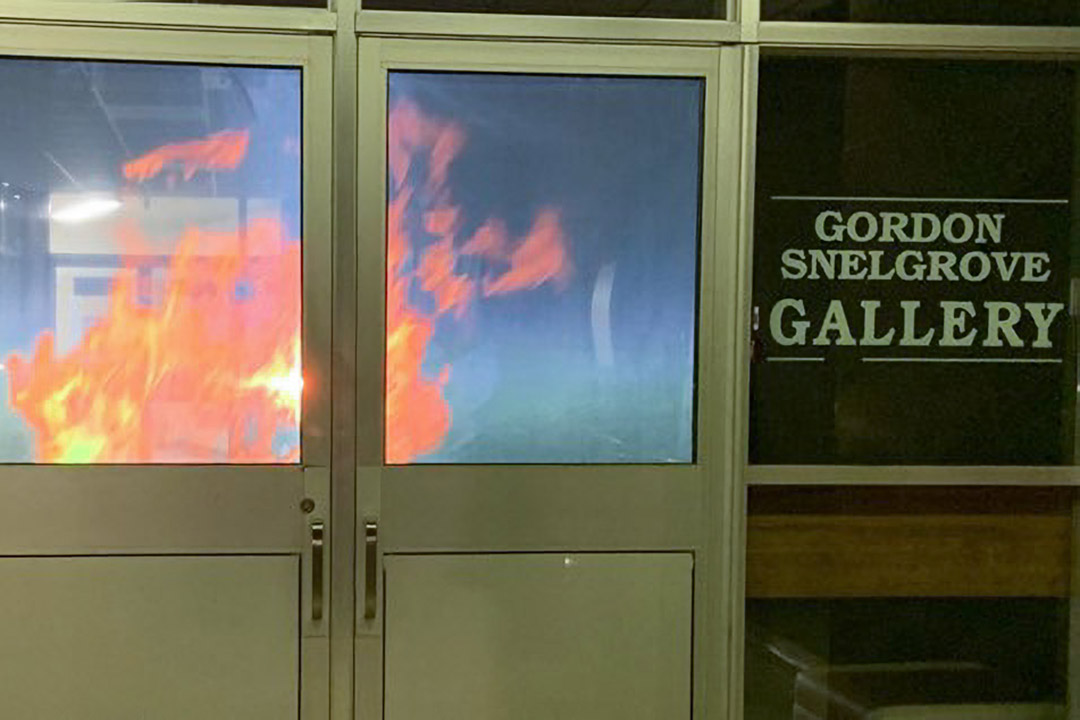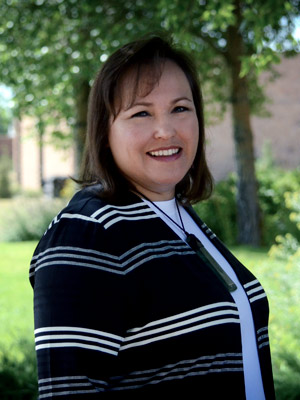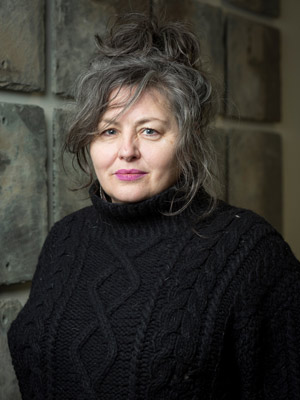
Illuminating truth and reconciliation at USask for National Indigenous Peoples Day
With a series of events for National Indigenous Peoples Day 2021, the University of Saskatchewan (USask) Art Galleries and Collection and the College of Arts and Science intend to start a renewed conversation about truth and reconciliation.
By Chris PutnamThe days surrounding Monday, June 21—National Indigenous Peoples Day—will see some buildings on the USask campus transformed through a digital art intervention.

On June 21, the College of Arts and Science will host an online panel of USask scholars for a discussion of Indigenous histories, current events and the concept of conciliation.
“These events are about people taking the dialogue into their personal lives and their professional lives and saying, ‘How can we do more?’” said Dr. Angela Jaime (PhD), vice-dean Indigenous in the College of Arts and Science.
Since early June, a video of a blazing fire has been projected onto the windows of the Gordon Snelgrove Gallery on campus. Visible from outside, the image is an art intervention that follows the news in May of the remains of 215 children found buried at a former residential school in Kamloops, B.C.
Sacred fires were lit at sites across Canada in response to the confirmation of the graves at Kamloops. The projection at the Snelgrove gallery is not intended as a sacred fire, said USask Art Galleries and Collection director jake moore, but as a show of solidarity.
“I knew that it was not my place to begin such a thing as a settler, but I felt it necessary to do something alongside.”
Jaime’s office has partnered with moore and the galleries staff to expand the project across the College of Arts and Science. From June 21–30, the Snelgrove gallery and the main entrance of the Arts Building will be lit up with the calls to action released in 2015 by the Truth and Reconciliation Commission of Canada.
“As an institution, our buildings project many things already. They are emblematic of a site of learning. They are emblematic of a certain gravitas,” said moore.
Projecting the calls to action onto the buildings, she added, is a way of using those spaces to share information and suggest a means to act.
“People are often wringing their hands and saying, ‘What can we do?’ And well, we have been told what we can do. We were told what we can do six years ago. The galleries felt it was helpful for us to revisit the gift of these calls to action that we’ve already been given,” said moore.
A selection of the calls to action relating to the work of the College of Arts and Science and the USask Art Galleries and Collection will be projected on the buildings. These will include the calls concerning museums and archives, commemoration, media, and the development of a royal proclamation of reconciliation.
“We have to start acknowledging that the calls to action were brought into fruition for a purpose,” said Jaime.“As an institution, we have to continue taking action. We’re not separate from the conversation. We have to address it and help others to see why it is so important.”

The June 21 panel discussion, titled Indigenous Truths, Trust and Conciliation, will be hosted by Jaime and will feature USask faculty members Dr. Benjamin Hoy (PhD), Dr. Winona Wheeler (PhD) and Dr. Carrie Bourassa (PhD) as panelists.
The event will also include a short video showing actions that USask and the College of Arts and Science have taken in the last year in response to the Truth and Reconciliation Commission’s calls to action.
“It’s not about patting ourselves on our backs, but a way of saying, ‘Here are some of the things that we’ve done, and here are the things we want to do moving forward. Let’s start the dialogue about how we can continue this work together,” said Jaime.
Visitors to campus can view the projections on the buildings at any time during June, but the images are most visible at night.
“This is a collective gesture. It is through our conversations that it gets better and larger,” said moore.

